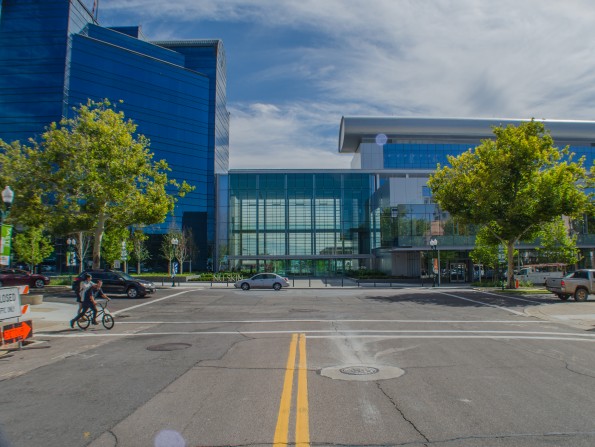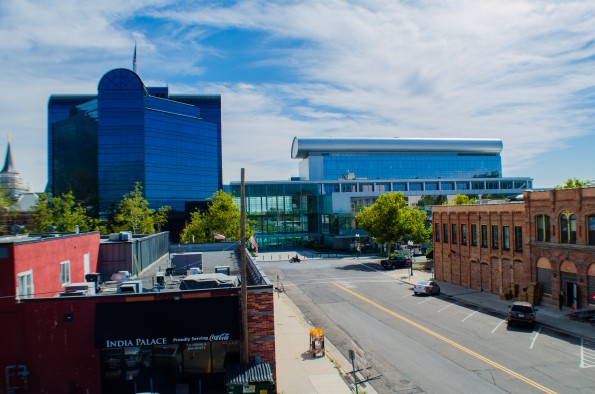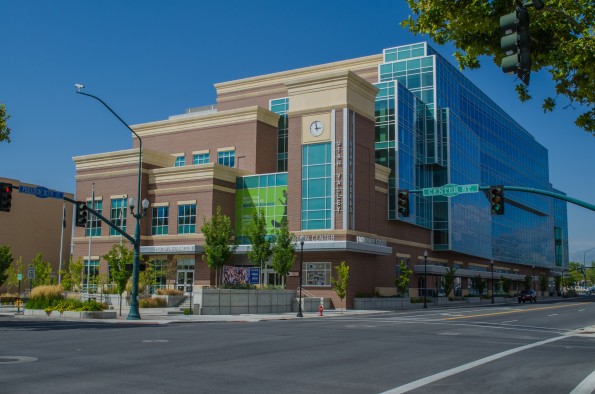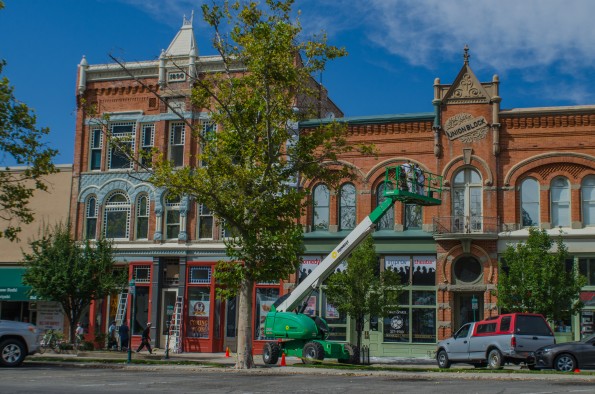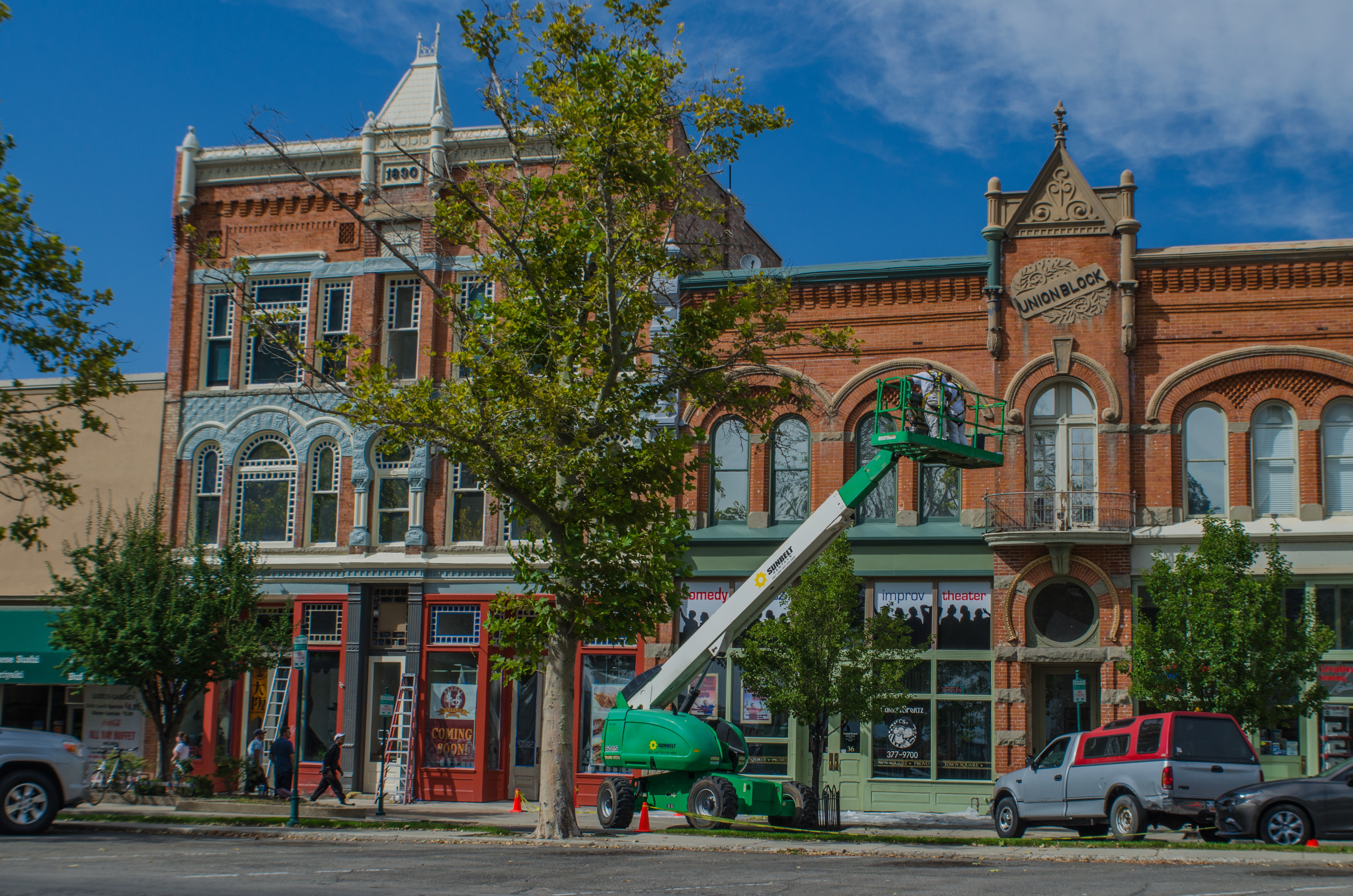People born within the last fifty years may have little memory of when a city’s downtown boasted a unique mix of culture and identity. Thanks to shopping malls and big box retailers, many of the downtowns across Utah serve as ghostly reminders of once-thriving districts of commerce. Empty sidewalks, “For Rent” signs and crumbling facades are instead commonly seen.
But one city has managed to revitalize its downtown district without the aid of popular chain stores, creating an environment that fosters an exclusive downtown experience. You may be surprised to learn that that city is Provo, the third largest city in Utah.
Yes, the heart of “Happy Valley,” where over 115,000 residents are commonly (and wrongly) painted with the same brush, has created an attractive and upbeat area that attracts people of all ages.

Mayor John Curtis has played an instrumental role in Provo’s continued success of its “Center Focus” initiative to revitalize the struggling area.
“There was a strong effort by my predecessor, Mayor Billings, but it was clearly the single biggest issue on people’s minds during my campaign. Provo has always been pretty and quaint, but it lacked vibrancy,” Curtis says.
Mayor Curtis defines “vibrancy” as what you might picture in a movie, where people walk happily along the sidewalks of pretty, tree-lined streets. In the last few decades, after the opening of the Orem University Mall, much of the downtown district had little foot traffic and many of its shops were boarded up—a dormant area in need of a facelift.
The city updated the streetscapes and sidewalks, and has offered a dollar-for-dollar match incentive for a business to revitalize its facade. Many popular businesses, such as Pioneer Books and Modern Shoe, have taken advantage of this grant.
“It’s been offered for many years,” Mayor Curtis laughs, “but now the struggle is keeping enough money in the fund because everyone wants to use it.”
Today, over 85 percent of downtown retail space is filled. Deputy Mayor of Economic Development, Dixon Holmes, says, “Our vacancies are down and the occupancy is up, and even more so is the number of independent restaurants that have thrived. We’ve never excluded national restaurants, but we see this as a uniqueness that you don’t get in other downtowns.”
In a small radius are over 50 locally owned restaurants, featuring a variety of ethnic offerings.
“One of the things that Provo has is a small business climate and the fact that it’s just a good place to do business,” Curtis adds.
The city works hard to be a friendly place for local business owners. “We believe in a less invasive and restrictive government,” says Holmes. “The turnaround time for permits and approvals is a night and day difference.”
In addition to making the city an attractive location for good business, the organically-grown music movement has helped the downtown scene gain prominence.
The local music scene has flourished in recent years. Many world-famous bands, such as Neon Trees and Imagine Dragons, have roots in downtown Provo, and city officials have taken notice. On the first Friday of every month, the city hosts a rooftop concert series on top of a large parking garage as a venue for local musicians. Thousands of people attend, with ages ranging from young children to grandparents.
Though the small businesses have redefined the landscape of the district, it can’t be denied that larger businesses have also been instrumental. NuSkin has recently opened its headquarters on the downtown strip, with decidedly mixed results. Some residents have criticized the glass building as a “black eye” among the classic brick-and-mortar designs.
But the city feels that Provo has always exemplified cutting edge architecture and didn’t want to simply recreate a “fake looking old building.”
“Provo has a history of incorporating the best designs of their era, which is what the NuSkin building represents,” Curtis says. He adds that the building has been hugely instrumental in the city’s revitalization. “Yes, there are those who wish the building was the traditional brick and mortar. But we don’t want to imitate the past. We want to create the new past.”
Mayor Curtis and Deputy Mayor Holmes hope to see other struggling downtowns reemerge. “They have to look at this for the long haul. You’re not going to do this in a year. I’m standing on the shoulders of people who started this many years ago. It takes a long time to revitalize a downtown,” Curtis insists.
Holmes offers his own thoughts on the issue. “Downtown is always only halfway there. That’s the nature of a good downtown. It’s constantly in motion and changing. Ultimately, we want downtown Provo to be a gathering place where people can live, work, and have recreation.”
Looking into the future, Mayor Curtis hopes to see a continued resurgence of local restaurants, but also hopes to see more retail spaces added to the mix. “The momentum is really important. The next phase is adding a lot of these fun retail stores. A number of blocks are targeted for redevelopment. The city center will also be redone and consolidated for mixed use.”
In addition, the LDS church is currently working to restore the burned-down Provo Tabernacle as a new temple.
“It’s hard getting people to rediscover what’s in our community,” concludes Holmes, “We hope to do a better job at reaching out to let people know what our new downtown has to offer.”
Photos by Mike Jones
